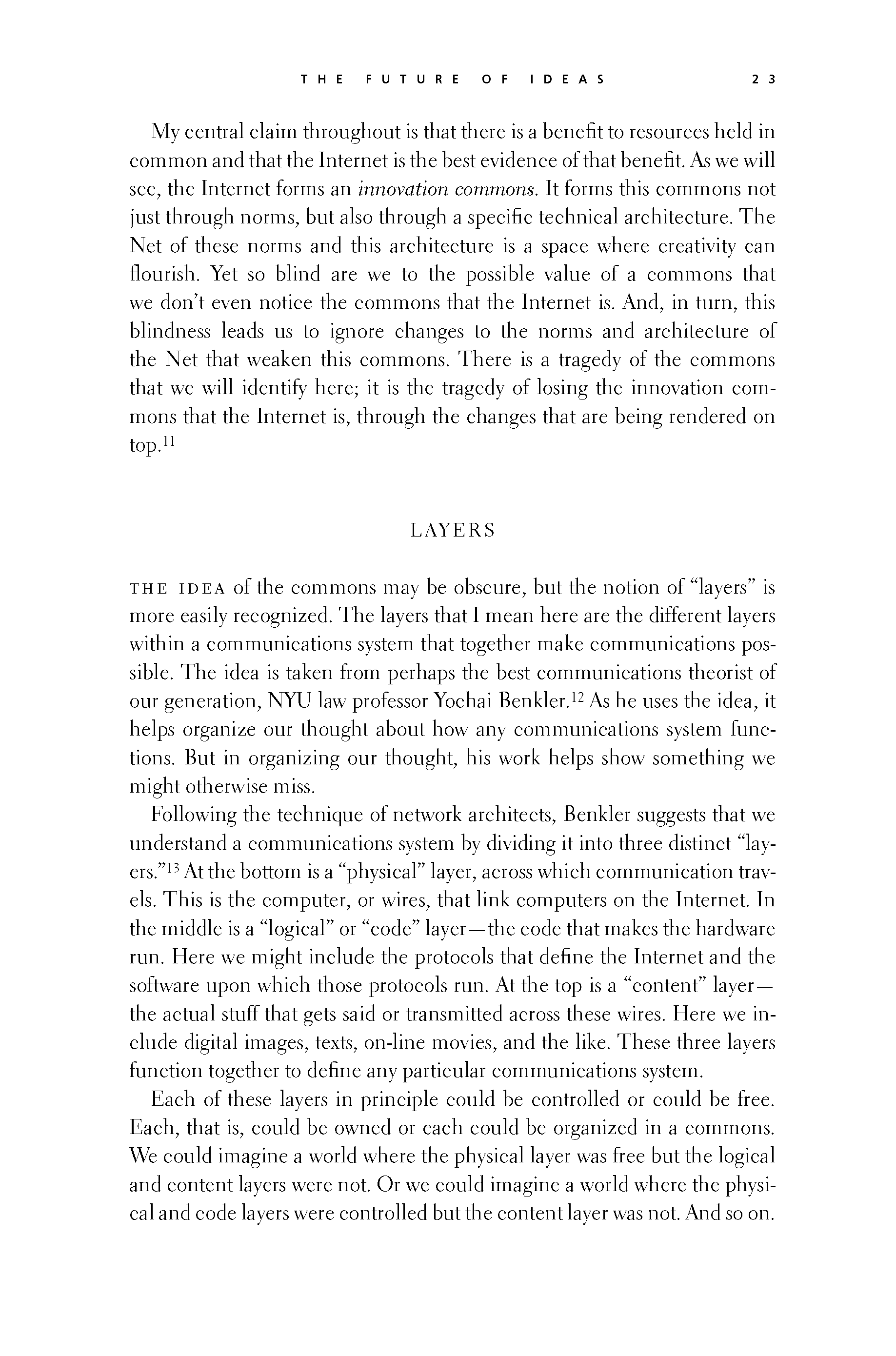 p022 _
-chap- _
toc-1 _
p023w _
toc-2 _
+chap+ _
p024
p022 _
-chap- _
toc-1 _
p023w _
toc-2 _
+chap+ _
p024
My central claim throughout is that there is a benefit to resources held in
common and that the Internet is the best evidence of that benefit. As we will
see, the Internet forms an _innovation_commons_. It forms this commons not
just through norms, but also through a specific technical architecture. The
Net of these norms and this architecture is a space where creativity can
flourish. Yet so blind are we to the possible value of a commons that
we don't even notice the commons that the Internet is. And, in turn, this
blindness leads us to ignore changes to the norms and architecture of
the Net that weaken this commons. There is a tragedy of the commons
that we will identify here; it is the tragedy of losing the innovation com-
mons that the Internet is, through the changes that are being rendered on
top.[2-11]
/tab\/tab\LAYERS/tab\/tab\
The idea of the commons may be obscure, but the notion of "layers" is
more easily recognized. The layers that I mean here are the different layers
within a communications system that together make communications pos-
sible. The idea is taken from perhaps the best communications theorist of
our generation, NYU law professor Yochai Benkler.[2-12] As he uses the idea, it
helps organize our thought about how any communications system func-
tions. But in organizing our thought, his work helps show something we
might otherwise miss.
Following the technique of network architects, Benkler suggests that we
understand a communications system by dividing it into three distinct "lay-
ers."[2-13] At the bottom is a "physical" layer, across which communication trav-
els. This is the computer, or wires, that link computers on the Internet. In
the middle is a "logical" or "code" layer -- the code that makes the hardware
run. Here we might include the protocols that define the Internet and the
software upon which those protocols run. At the top is a "content" layer --
the actual stuff that gets said or transmitted across these wires. Here we in-
clude digital images, texts, on-line movies, and the like. These three layers
function together to define any particular communications system.
Each of these layers in principle could be controlled or could be free.
Each, that is, could be owned or each could be organized in a commons.
We could imagine a world where the physical layer was free but the logical
and content layers were not. Or we could imagine a world where the physi-
cal and code layers were controlled but the content layer was not. And so on.
[[23]]
p022 _
-chap- _
toc-1 _
p023w _
toc-2 _
+chap+ _
p024